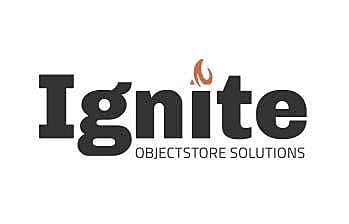Top Object Oriented Databases Softwares
Object Oriented Databases software provides a means to store, retrieve, and manage data through the lens of object-oriented programming. This type of database aligns data storage with objects, similar to those in programming languages like Java or C++. It enhances data models by integrating them directly with application processes, making data interactions more intuitive for developers. By mirrori... Read More
13 companies found
VelocityDB
Product Description
VelocityDB is a high-performance database management solution specifically designed for developers and businesses needing efficient data handling. At its core, VelocityDB offers a flexible, scalable, and easy-to-use framework that simplifies the complexities of database management, making it an excellent fit for organizations of all sizes. One of the standout features of VelocityDB is its focus o... Read More
Users
- • No Data
Industries
- • No Data
Market Segment
- • No Data
Product Description
ObjectBox is a software designed to make handling data simpler and more efficient for developers and businesses. It offers a solution that helps you store data directly on devices like smartphones, tablets, and IoT gadgets, rather than relying solely on cloud storage. This means your apps can work faster and offline, which is great for improving user experiences and reliability. At its core, Obj... Read More
Users
- • No Data
Industries
- • No Data
Market Segment
- • No Data
ObjectStore
Product Description
ObjectStore is a software solution designed to simplify the way businesses manage and store their data in the cloud. It is tailored for companies looking for an easy and efficient way to handle large amounts of information without getting bogged down by complexities or technical challenges. Imagine having all your important documents, files, and data readily available whenever you need it, withou... Read More
Users
- • No Data
Industries
- • No Data
Market Segment
- • No Data
Product Description
Google Cloud Storage for Firebase is a powerful and easy-to-use service designed to help you store and manage your app's data securely. Built by Google, it seamlessly integrates with Firebase to provide a reliable backend for your applications, whether they run on mobile or web platforms. At its core, Google Cloud Storage for Firebase offers you two main benefits: convenience and security. It all... Read More
Users
- • No Data
Industries
- • No Data
Market Segment
- • No Data
Actian NoSQL
Product Description
Actian NoSQL is a versatile software designed for businesses looking to manage and analyze large amounts of data in a simplified, efficient way. It is crafted to handle diverse types of data, making it a go-to solution for many industries such as retail, financial services, and healthcare. What sets Actian NoSQL apart is its ability to work with unstructured data. This means it can manage informa... Read More
Users
- • No Data
Industries
- • No Data
Market Segment
- • No Data
Apache OODT
Product Description
Apache OODT (Object Oriented Data Technology) is a powerful software tool designed to make it easier for organizations to manage, process, and analyze large quantities of data. Created originally by NASA, this software helps streamline the way data is handled from start to finish, making the entire process less complicated and more efficient. One of the key advantages of Apache OODT is that it ca... Read More
Users
- • No Data
Industries
- • No Data
Market Segment
- • No Data
Objectivity/DB
Product Description
Objectivity/DB is a versatile software solution that simplifies the way you manage and store complex data. Designed to handle large volumes of interconnected information seamlessly, it provides reliable, high-performance data management for businesses that require efficient and scalable solutions. Whether you're dealing with intricate database relationships or need to run sophisticated queries, Ob... Read More
Users
- • No Data
Industries
- • No Data
Market Segment
- • No Data
namucloud myPC
Product Description
Managing files across multiple devices can be a hassle, but namucloud myPC simplifies this process by providing an easy-to-use cloud storage solution. This software is perfect for businesses, remote teams, and individual users who need a reliable way to store and access their documents, photos, and other important files from anywhere. With namucloud myPC, you can effortlessly upload, share, and s... Read More
Users
- • No Data
Industries
- • No Data
Market Segment
- • No Data
dBASE 2019
Product Description
dBASE 2019 is designed for organizations that need a reliable database management system without the complexity. It’s for small to medium-sized businesses that want a straightforward solution to manage their data effectively and without fuss. Built on a long history of robust database technology, dBASE 2019 combines familiarity with modern-day needs, ensuring you have the tools that suit today's b... Read More
Users
- • No Data
Industries
- • No Data
Market Segment
- • No Data
Apache Torque
Product Description
Apache Torque is a straightforward tool that helps manage and interact with databases in a smooth and efficient way. It's designed for those who want to focus on their business without getting bogged down by the complexities of database management. With Torque, you can easily create and manage database schemas from your code, making it an excellent choice for software as a service (SaaS) applicati... Read More
Users
- • No Data
Industries
- • No Data
Market Segment
- • No Data
What are Object Oriented Databases used for?
Object Oriented Databases software is leveraged primarily for storing and managing data objects as opposed to traditional data tables. These databases integrate object-oriented programming paradigms with database technologies, making them particularly advantageous for certain use cases where both structure and behavior of the data objects need to be captured and maintained efficiently.
Data with Complex Interrelationships
Object Oriented Databases software is ideal for applications requiring the modeling of complex interrelated data. This is because it naturally supports the encapsulation of both data attributes and behaviors within objects, providing a robust way to manage complex relationships and interactions. This capability is essential for industries like scientific research, engineering, and complex systems simulation, where intricate data associations must be maintained and dynamically manipulated.
Software Development and Simulation
In the realm of software development and simulation, Object Oriented Databases software allows developers to store objects as they are utilized within applications. Seamlessly integrating the database with object-oriented programming languages, it extends the natural data modeling capabilities of these languages into the data persistence layer. This results in more intuitive data management processes, often improving development efficiency and performance in projects like simulations, real-time systems, and domain-driven design applications.
Multiversion Data
Another application of Object Oriented Databases software is in managing multiversion data. In cases where it's necessary to keep track of various versions of data instances over time, this database type excels by efficiently managing the evolution of objects without the overhead commonly associated with maintaining version histories in relational databases.
Real-Time Systems
Real-time systems benefit significantly from Object Oriented Databases software as it provides not only the necessary performance to access and manipulate objects quickly but also maintains consistency and integrity of the objects through transactions. Systems requiring immediate data processing and a quick response rate, such as telecommunications networks and transportation systems, can exploit these characteristics to maintain operational reliability and speed.
Enhanced Multimedia Applications
For enhanced multimedia applications, Object Oriented Databases software supports the storage and manipulation of complex data types like images, audio, and video. Its ability to extend data types and incorporate multimedia in their native form facilitates richer content management and retrieval strategies for applications in digital libraries, virtual reality systems, and content management systems, among others.
CAD/CAM, AI, and Machine Learning
Industries leveraging Computer-Aided Design/Manufacturing (CAD/CAM), artificial intelligence, and machine learning find Object Oriented Databases software highly advantageous. These fields often require sophisticated data models to handle the multifaceted nature of their objects, representing everything from three-dimensional structures to neural network training models. The inherent ability of these databases to effectively manage both object states and behaviors provides the flexibility and scalability needed to meet the demands of these advanced applications.
This variety of applications illustrates the versatility of Object Oriented Databases software when dealing with complex data systems. By aligning the storage methodology with object-oriented programming concepts, these databases optimize both data management and software design processes across diverse fields.
How do Object Oriented Databases differ from relational databases?
Data Representation
Object Oriented Databases software represents data in the form of objects, similar to how data is handled in object-oriented programming languages like Java or C++. Each object encapsulates both data and behavior, which reflects the real-world entities more naturally. In contrast, relational databases use tables to represent data, where information is stored in fixed rows and columns, necessitating a rigid schema. This tabular approach, while robust, may sometimes require complex mapping to represent real-world entities.
Schema Flexibility
Object Oriented Databases allow for more dynamic schemas where classes can inherit properties from other classes, facilitating easier modification and extension of databases. This inherent flexibility can be beneficial in rapidly changing environments where data structures evolve. Relational databases, however, rely on predefined schemas involving tables and relations, which might be inflexible when modifications are needed. Alterations in a relational database often require significant restructuring, leading to potential downtimes.
Data Access
Data access patterns vary between the two database types. In Object Oriented Databases software, navigating through data is typically done using object references, which might be more intuitive for developers used to object-oriented programming paradigms. This can lead to more efficient access patterns when dealing with intricate data structures. Relational databases access data using Structured Query Language (SQL), a powerful language suited for operations within tabulated environments. Although SQL is widely recognized and utilized, complex data relationships can demand extensive joins and additional data manipulation.
Performance
The performance implications vary based on the application and how data is modeled. Object Oriented Databases can provide direct access to complex data structures using object references, which can enhance performance, especially in applications with nested or hierarchical data. However, they might not scale as efficiently as relational databases when it comes to straightforward CRUD (Create, Read, Update, Delete) operations on large datasets. Relational databases, through years of optimization, often deliver faster performance in transaction-heavy applications using various indexing techniques.
Consistency and Integrity
Ensuring consistency and maintaining integrity are core functions of database management systems. Relational databases have built-in support for data integrity through constraints like primary keys, foreign keys, and normalization processes, ensuring stable data output across operations. Object Oriented Databases, while benefiting from encapsulation and inheritance, may depend more on application-level logic to uphold data integrity, potentially leading to vaguer error handling if not properly managed.
Popularity and Community Support
Relational databases are more established in the industry, backed by extensive documentation and a mature ecosystem. This longstanding presence translates into substantial community support and a plethora of resources. Object Oriented Databases, although conceptually aligning with modern programming paradigms, have a smaller market footprint. Despite this, they hold a specialized role in fields focusing on complex data modeling.
Integration and Interoperability
Relational databases adhere to standards like SQL, facilitating interoperability with various systems and tools in the modern data ecosystem. They seamlessly integrate into existing IT frameworks, making them a go-to choice for many enterprises. Object Oriented Databases, on the other hand, may require custom solutions or middleware to integrate with different systems, posing challenges in mixed-environment deployments.
Understanding how Object Oriented Databases software differs from relational databases can guide the appropriate implementation for specific application needs, balancing factors like flexibility, performance, and existing infrastructure.
What are the advantages of using Object Oriented Databases?
Seamless Integration with Object-Oriented Programming
Object Oriented Databases software seamlessly integrates with object-oriented programming languages like Java, C++, and Python. This integration eliminates the need for complex data mapping between programming objects and database schemas. Instead, objects can be directly stored and retrieved from the database, maintaining their properties and behaviors. This leads to increased efficiency in the development process as developers can work within a consistent paradigm.
Enhanced Data Modeling Capabilities
Object Oriented Databases software provides rich data modeling capabilities by allowing complex data types to be represented as objects. These databases support inheritance, encapsulation, and polymorphism, which align with natural data representations. Inheritance allows new object classes to inherit properties from existing ones, promoting code reuse and reducing redundancy. Encapsulation ensures object data is bundled with its methods, enhancing data integrity. These features make object oriented databases ideal for applications dealing with intricate data structures.
High Performance with Complex Data
For applications demanding high performance with complex data, Object Oriented Databases software offers significant advantages. Since data is stored in the form of objects, databases perform faster in scenarios involving complex, interrelated data sets. Object databases reduce overhead by minimizing join operations, which are common in relational databases. By storing objects natively, they can quickly traverse relationships, improving performance and response times in complex query operations.
Reusability and Maintenance
Using Object Oriented Databases software encourages reusability and ease of maintenance. By encapsulating behavior and data, developers can create modular and reusable code components. This not only speeds up the development process but also simplifies maintenance. When changes are required, modifying an object class will update all instances, reducing the risk of introducing errors. Reusability ensures that existing components can be utilized across various applications, leading to a more efficient development lifecycle.
Better Suited for Certain Applications
Some applications naturally align with the features provided by Object Oriented Databases software. These include applications with spatial, engineering, and multimedia data. The ability to natively handle complex data types and structures makes these databases highly suitable for applications like CAD/CAM, telecommunications, and scientific computing. They offer advantages in storage, retrieval, and manipulation of data-rich domains, maintaining consistency with the application’s object model.
Support for Versioning and Complex Relationships
Object Oriented Databases software excels at managing version control and complex relationships. Versioning is crucial in applications where objects undergo frequent changes, as it allows multiple versions of an object to coexist. It tracks changes over time, providing a history of modifications. Moreover, the database’s object-oriented nature simplifies the modeling of complex relationships, making it easier to represent and manage data that has multiple interactions and dependencies.
Overall, Object Oriented Databases software offers a framework that aligns with the object-oriented programming paradigm, simplifies the data management process, and enhances performance for complex applications.
How are objects stored in Object Oriented Databases?
Storage Mechanism
Object Oriented Databases software use a storage mechanism that aligns with the principles of object-oriented programming. This means storing data as objects, similar to the structure they have in programming languages like Java, C++, or Python. Objects are stored in their entirety, encapsulating both the data attributes and methods that can operate on the data. This approach maintains the integrity and behavior of complex data types, allowing them to act similarly in the database as they do in memory.
Object Identifiers
In Object Oriented Databases software, each object receives a unique object identifier (OID). An OID is akin to a primary key in relational databases, ensuring each object can be distinctly identified and accessed. The OID is typically system-generated and invisible to the user, facilitating efficient retrieval and association of objects within the database.
Class Hierarchies
The storage of objects often aligns with class hierarchies where objects are instances of classes. These classes can further extend or inherit attributes and methods from other classes. Object Oriented Databases software can store objects according to their class structure, supporting features like inheritance, encapsulation, and polymorphism. This class-based storage enables objects to be organized and manipulated in a way that reflects their real-world relationships and behaviors.
Persistence
The primary aim of any database is to maintain data persistence. In Object Oriented Databases software, persistence is achieved by saving objects, including their states and behaviors, directly to the disk storage. This can be done using serialization techniques where objects are converted into a format suitable for storage or transmission and then deserialized when they are needed again. Persistence ensures that objects and their states remain consistent, even when the application that created them is restarted.
Object Relationships
Objects in Object Oriented Databases software often exhibit complex inter-relationships. These relationships can be one-to-one, one-to-many, or many-to-many. The database efficiently manages these links, allowing for direct reference and navigation between interconnected objects. Instead of using foreign keys like in relational models, Object Oriented Databases software employs direct pointers or references to maintain these object relationships efficiently.
Data Methods
Alongside storing data, objects in Object Oriented Databases software also store methods, which are functions or procedures attached to the object. This means that the logic for manipulating the data is stored together with the data it operates on. This encapsulation supports data integrity and abstraction, allowing objects to manage their state and behavior autonomously.
Schema Evolution
Object Oriented Databases software supports schema evolution, which allows for dynamic changes in the schema without requiring a complete overhaul of the database. This makes it easier to accommodate changes in application logic by adding new properties or methods, enhancing flexibility in data management.
Invariably, the storage and retrieval system in Object Oriented Databases software mimics real-world modeling more closely than traditional database systems, creating a seamless bridge between application design and data management.
What programming languages are commonly supported by Object Oriented Databases?
Overview
Object Oriented Databases software is designed to store data in the form of objects, akin to the way they are used in object-oriented programming languages. This approach allows for more natural data modeling in applications that use these languages. Because of this alignment, certain programming languages are more commonly associated with Object Oriented Databases software. Below is a discussion of these languages and why they are often supported in this context.
Common Programming Languages
-
Java
Java is a widely used programming language and is inherently object-oriented. Its robust libraries, platform independence, and strong community support make it a prime candidate for integration with Object Oriented Databases software. These databases often provide seamless interactions with Java objects, allowing for smooth data persistence without complex conversions.
-
C++
C++ offers powerful object-oriented features that align well with the capabilities of Object Oriented Databases software. Its ability to manage system resources efficiently and flexibility in application development make it a common choice for high-performance applications that may benefit from object-oriented data storage.
-
C#
C# is designed specifically for building a wide range of enterprise applications. Its object-oriented nature and the tight integration with the .NET framework make C# a natural fit for Object Oriented Databases software. Databases supporting C# typically allow developers to store and retrieve data using familiar object concepts, reducing the impedance mismatch that can occur with other types of databases.
-
Python
Python’s simplistic syntax and powerful libraries make it a popular choice for both beginners and experienced developers. Although primarily known for scripting, Python’s object-oriented capabilities allow it to work effectively with Object Oriented Databases software. This language is often chosen for rapid development needs due to its versatility and ease of use.
-
Ruby
Ruby, known for its elegant syntax, is fully object-oriented and facilitates code readability and maintainability. This makes it compatible with Object Oriented Databases software, especially in web development. Ruby on Rails, a popular web application framework, often leverages these databases for its backend operations due to the ease with which Ruby objects can be persisted.
-
Smalltalk
Known as one of the pioneering object-oriented languages, Smalltalk’s design strongly aligns with the philosophy of Object Oriented Databases software. It emphasizes objects and messages, making it suitable for creating systems that rely heavily on the encapsulation and inheritance features these databases support.
Other Considerations
Different Object Oriented Databases software options may offer APIs or plugins for additional languages as technology evolves. The choice of language often depends on the application requirements and the environment in which the system operates. Performance, scalability, and specific project needs can all influence which programming languages are best supported by the Object Oriented Databases in use.
In conclusion, Java, C++, C#, Python, Ruby, and Smalltalk are commonly supported by Object Oriented Databases software due to their strong alignment with object-oriented programming principles.
How can Object Oriented Databases enhance software development?
Simplified Data Modeling
Object Oriented Databases software allows developers to store data in the same way it is modeled in the application, utilizing the object-oriented paradigm. This alignment between the object-oriented programming languages and the databases simplifies data modeling. It streamlines the transition from design to implementation, minimizing discrepancies and enhancing the software development lifecycle. Structures such as classes, objects, and inheritance are directly implemented, reducing the complexity of translating object-oriented models into relational models.
Improved Data Management
With Object Oriented Databases software, data encapsulation is aligned with object-oriented principles. This means that both data and methods that operate on the data are stored as a single unit, enhancing data management. Developers can manage complex data more effectively, as the data model mirrors real-world scenarios more closely. This optimizes the handling of data types and relationships, eliminating the need for mapping routines between systems.
Enhanced Reusability and Maintenance
By employing Object Oriented Databases software, developers benefit from increased code reuse. Object-oriented principles such as inheritance and polymorphism facilitate components that are more reusable and scalable. Maintenance becomes simpler, as updates to data structures or methods are reflected throughout the system seamlessly. This reutilization of components fosters a modular design, promoting cleaner code and easier updates.
Seamless Integration with Object-Oriented Languages
Object Oriented Databases software provides seamless integration with object-oriented programming languages like Java, C++, and Python. This enhances compatibility, allowing developers to leverage existing skills in object-oriented programming without needing to adapt to different paradigms. Direct compatibility allows for reduced learning curves and supports a more coherent development environment, fostering efficient teamwork and collaboration.
Better Handling of Complex Data Structures
The capacity to represent complex data structures natively is a crucial advantage of Object Oriented Databases software. Different types of data, including multimedia, maps, and graphs, can be managed without additional layers of abstraction. This direct handling reduces complexity and leads to more efficient storage and retrieval processes. The ability to store many data types together supports advanced applications, making these databases ideal for projects requiring sophisticated data manipulation.
Support for Long-lasting Applications
Object Oriented Databases software offers robust support for long-lived, data-intensive applications. Applications with frequent changes in data structure or those requiring long-term sustainability benefit significantly. The inherent adaptability to new types of data and changing schemas makes these databases suitable for evolving business needs, enhancing their applicability in dynamic environments.
Encapsulation and Security
Encapsulation, a key feature in object-oriented principles, is implicitly supported in Object Oriented Databases software. This encapsulation allows for higher security as it separates different entities, controlling access to data. By integrating methods that control data integrity within the database, it ensures secure data management practices across the development lifecycle.
Alignment with Modern Development Practices
Incorporating Object Oriented Databases software aligns with modern development practices that emphasize agility and speed. The ability to rapidly prototype and iterate over designs without disrupting the underlying database architecture is crucial in modern software development. These databases aid in agile fashions, allowing quick adaptation to changes and requirements, thus providing a competitive edge in software development projects.
What are some common features of Object Oriented Databases?
Object Oriented Databases software (OODBs) integrate object-oriented programming and database technologies to manage complex data. These databases store data in objects rather than traditional table formats. Here are some common features of Object Oriented Databases software:
Object Identity
Object identity is a fundamental feature of Object Oriented Databases software. Each object has a unique identifier that distinguishes it from other objects. This identifier is independent of the object's state, allowing objects to be manipulated, stored, or retrieved efficiently.
Complex Data Types
Object Oriented Databases software supports complex data types. Users can define structured objects and attributes, facilitating the storage of complex data structures directly in the database. These databases manage not only simple data types but also user-defined ones, enhancing flexibility and adaptability.
Encapsulation
Encapsulation involves bundling the data and the methods that operate on the data within a single unit or class. Object Oriented Databases software incorporate encapsulation to keep data secure and consistent by restricting direct access. Data can only be altered using predefined methods, ensuring data integrity.
Inheritance
Inheritance is a characteristic that allows new object classes to inherit properties and methods of existing classes. Object Oriented Databases software use inheritance to reduce redundancy, simplify data management, and facilitate the creation of hierarchical data structures. This feature helps leverage existing definitions to create new data models.
Data Abstraction
Data abstraction is the concept of hiding the complex implementation details while showcasing only essential features of an object. Object Oriented Databases software implement data abstraction using abstract data types, making data usage simple but powerful. Users interact with data through interfaces without being exposed to implementation specifics.
Persistence
Persistence is the capability of Object Oriented Databases software to keep objects intact beyond the program's lifetime. Persistent objects maintain their information in storage systems, allowing data retrieval after program termination. This characteristic ensures longevity and availability of data, which is crucial for long-term data management.
Polymorphism
Polymorphism in Object Oriented Databases software allows objects to be processed differently based on their data type or class. This feature enables the implementation of methods in multiple forms, facilitating dynamic interaction with objects. Polymorphism increases flexibility and code reusability by allowing a common interface to interact with different data types.
Querying Capability
Object Oriented Databases software provides robust querying capabilities for efficient data manipulation and retrieval. These databases offer query languages tailored for object-oriented data management, allowing users to perform operations on objects seamlessly. The querying ability is essential for maintaining and retrieving object data within complex structures.
Concurrency Control
Concurrency control in Object Oriented Databases software ensures data consistency and integrity when multiple operations occur simultaneously. This feature manages concurrent access to objects, enabling transactions to process without interference. Proper concurrency control is crucial for multi-user environments, reducing conflicts and maintaining data reliability.
Schema Evolution
Schema evolution allows changes in the database schema without losing data integrity or needing extensive rework. Object Oriented Databases software support schema changes, accommodating evolving data requirements and application growth. Flexibility in schema evolution is vital for adapting to new application demands and technological advancements.
Object Oriented Databases software present these features to offer efficient data management solutions for complex and evolving data structures.









